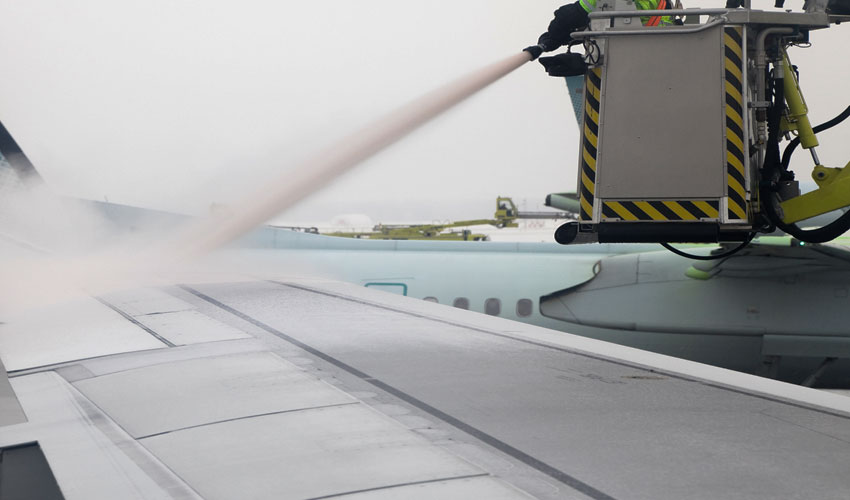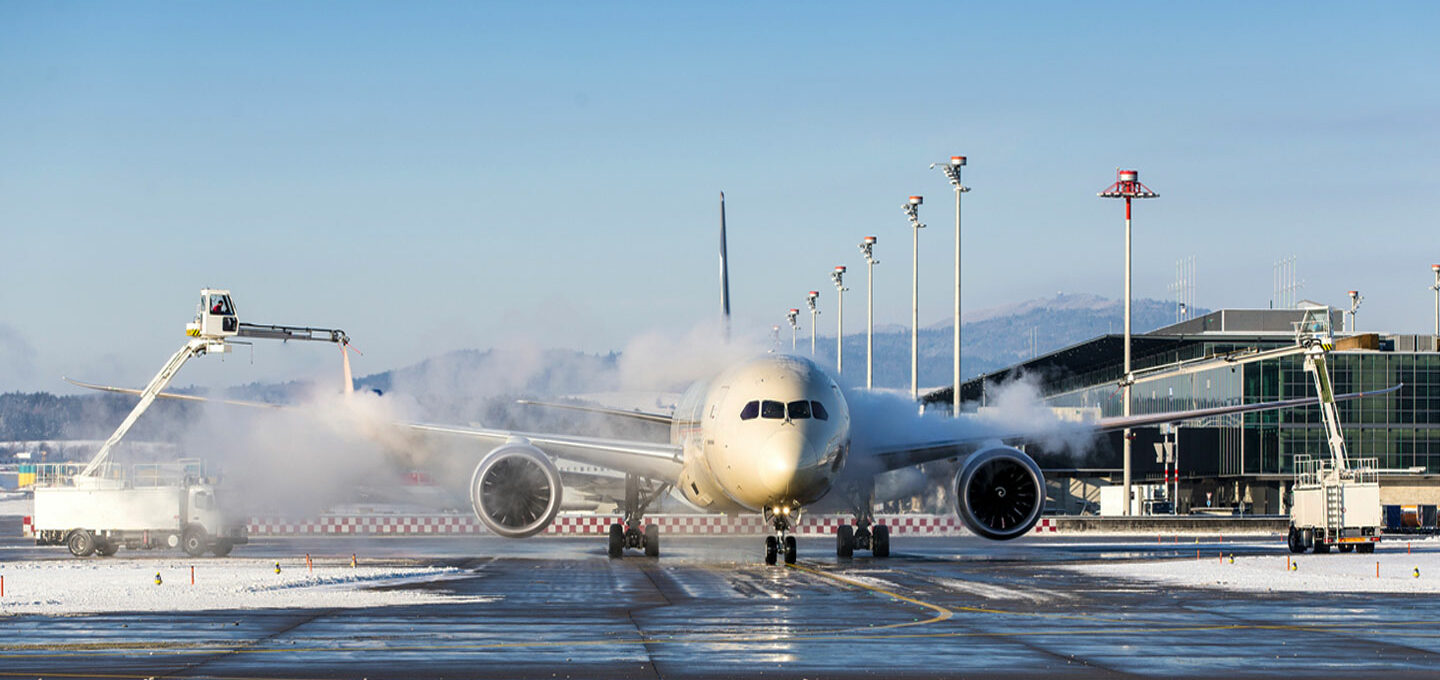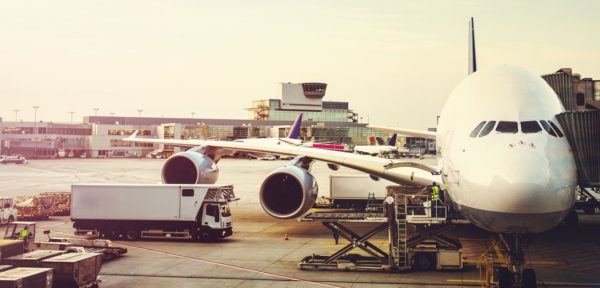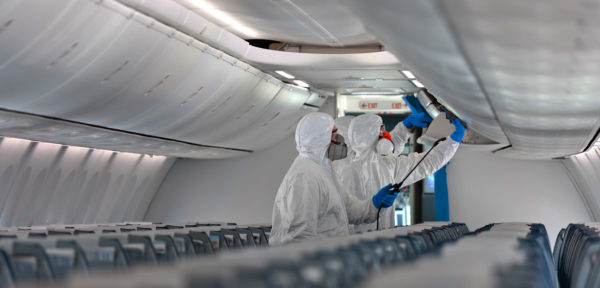The winter season has officially started. Weather conditions can make flying during the cold months especially challenging. To ensure a safe take-off, aircraft deicing must be periodically performed. This critical process, consisting of removing ice, snow or slush from tail and wings, usually takes 10 to 20 minutes. Given that it extends the ground handling time, resources have to be planned efficiently. When not executed optimally, this operation can result in several delays and extra costs. That puts a great responsibility on the shoulders of planners and dispatchers who deal with a task which is often reactive and on must be performed on very short notice.
Today, factors beyond snowstorms add some complexity to aircraft deicing. The COVID-19 health and safety mandates have introduced several changes in the traditional way of performing this task. For instance, maintaining separate staff teams and reducing shift overlaps can help lower the contagion risk. Therefore, keeping contact between employees to a minimum must be considered in the roster planning, otherwise, quarantine measures would further reduce the available workforce. As carriers must deal with capacity restraints, the optimal deployment of deicing vehicles and other equipment is also important.
How can airlines prepare their deicing operations and prevent further disruptions?
Aircraft deicing and the new challenges
1. Flight schedule volatility
Current operational circumstances require forecasting of more than just what will happen next. As not every country applies the same travel restrictions, carriers have to continuously adapt their flight schedules to meet demand. This uncertainty affects aircraft deicing procedures since resources cannot be planned much in advance. Decision makers need then to revise forecasts more frequently to better reflect possible occurrences.
Making plans adaptive and self-correcting is the basis for achieving increased agility. By shortening the horizon for plan updates, decisions can be made earlier, enabling better performance despite the constraints. Thanks to real-time data and “what-if” assessments, managers can determine resource demand and related costs for various flight schedules. These scenarios should then be tested to ensure that they are still valid and will lead to optimal outcomes.
2. Reduced available resources
The unpredictable nature of weather conditions makes aircraft deicing a task that demands a significant amount of resources. Commonly, dispatchers must actively react to interruptions and adapt allocation plans. Today, COVID-19 brings a series of workforce challenges and infrastructure restraints that further impact the on-time execution of this operation. The enforcement of social distancing and hygiene measures limit the number of staff members and equipment that can be used to deice a specific airplane. Therefore, quick and precise resource assignments that maximize the capacity utilization on the day of operation are necessary.
For example, by using an optimized vehicle schedule rather than the typical First Come First Serve (FCFS) strategy, operators can achieve the expected service level. Why? The FCFS method determines the sequence of deicing by the time the request has been met. This means that an available truck moves on to the next aircraft in line without really considering the priority of the flights. By contrast, an optimized schedule can handle higher traffic volumes with an available fleet. This will be especially critical as passenger traffic starts to recover.


3. New training requirements
A problem that has affected the aviation industry for years is the shortage of qualified personnel. Since a great number of the employees hired for performing aircraft deicing tasks are external seasonal workers, they might be less experienced than other ground staff. To overcome this issue, companies offer special training on the spot.
The pandemic, however, has forced companies to adjust their workforce requirements. The severe fall in air travel demand had a great influence on personnel reduction. The International Air Transport Association forecasts that global passenger volume may contract by 60.5% by the end of this year. With a slower than expected recovery, it seems that aviation will have to manage staff constraints for a longer period.
Providing training courses to the available personnel is more important than ever. On the one hand, training is essential to compensate for the loss of competent manpower due to part-time or permanent layoffs. On the other hand, it is required to meet a rapidly emerging need for new knowledge and skills related to changing procedures and operational demands. Deicing specialists must comply with:
- Social distancing rules
- Improved routine cleaning of surfaces
- Enhanced hand sanitation
- The correct use of masks and other personal protection equipment
Leading-edge solutions to tackle new needs
This season, snow and ice are not the only issues facing winter operations. As the Coronavirus continues evolving, decision makers must learn to deal with a rapidly changing context by taking advantage of a limited available capacity. Aircraft deicing plays a crucial role in achieving expected On-Time Performance. Therefore, the ability of dispatchers to quickly react to irregularities is paramount.
Dynamic planning, efficient training and an optimal supply of resources are the pillars of an optimal deicing strategy in the New Normal. Equally important is the communication and cooperation between stakeholders both to minimize delays and related passenger dissatisfaction. Leveraging an Artificial Intelligence-driven deicing solution enables companies to address all new challenges more efficiently. Then, smart algorithms facilitate decision making and reduce the workload.
Based on real-time information on airplane arrival and departure times, as well as weather conditions, an optimization planning tool predicts the number of scheduled departures likely to require deicing. Tasks can then be created even before the actual request takes place. With the analysis of different scenarios, dispatchers get a detailed preview of the required staffing level over the day. If an aircraft is being deiced on the stand, vehicles can be sent from one stand to another, following the most cost-effective option. This way, vehicle travel times can be reduced, and productivity increased.





0 comments on “Aircraft Deicing 2.0: Mastering the Challenges of COVID-19”